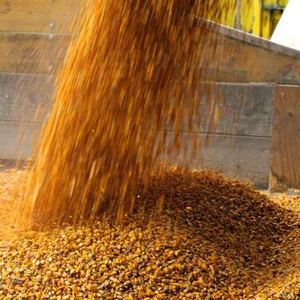USDA increases corn ending stocks on less use for ethanol

June 10, 2015
BY Susanne Retka Schill
In the June supply/demand report, USDA increased corn beginning stocks for the 2015-‘16 crop year based on new projections that lower the corn use for ethanol production. The June 10 supply/demand report left projected corn production for 2015-‘16 unchanged at 13.63 billion bushels and raised corn beginning stocks for 2015-‘16 “due to a 25-million-bushel reduction in 2014-‘15 forecast corn use in ethanol production based on data reported in Grain Crushing and Co-Products Production report through April.”
The reduction in corn used for ethanol is most likely not reflecting a drop in ethanol production, however. Shortly after the first crush report was released in February, USDA commented that the new survey-based corn crush report was showing the ethanol conversion rate is higher than assumed. The agency had previously estimated corn use for ethanol based on calculations involving the assumed conversion rate and the Energy Information Administration’s ethanol production reports. The most recent EIA short-term outlook is predicting ethanol production will remain near current levels, averaging 936,000 barrels per day in 2015, 1,000 barrels per day higher than 2014. The USDA’s estimate of 5.2 billion bushels for ethanol production remains unchanged from the previous month’s report, up from 5.175 estimated for the 2014-‘15 crop year and 5.134 for 2013-‘14.
Corn ending stocks for 2015-‘16 are now projected at 1.77 billion bushels, up 25 million bushels, the same as for beginning stocks. The range for the 2015/16 season-average farm price is unchanged at $3.20 to $3.80 per bushel, compared with the 2014-‘15 range of $3.55 to $3.75 per bushel, which is also unchanged this month.
Foreign coarse grain supplies for 2015-‘16 are projected up 2.8 million tons, mostly reflecting larger 2014-‘15 production and carryout for Brazil.
Advertisement
Advertisement
Brazil corn production for 2014-‘15 is raised 3 million tons to a near-record 81 million tons with higher area reported for the second crop that will be harvested over the coming months. Yields are also projected higher reflecting extended rainfall through May, well beyond the normal end of the rainy season in central west Brazil.
Global corn production for 2015-‘16 is projected down 500,000 tons with reductions for Zambia, Nepal, Zimbabwe and EU more than offsetting a 1-million-ton increase for Russia. Russia 2015-‘16 corn production is raised 1 million tons on a higher area and yield. Planting progress data indicate a year-to-year increase in seeded area, which is also reflected in higher year-to-year imports of agricultural chemicals. While hybrid seed imports have been reported down from last year, these imports have also been stronger than expected as corn remained a favorable alternative compared with other spring crops.
Global 2015-‘16 coarse grain consumption is raised slightly supported by higher expected corn trade. Foreign corn exports are raised for 2015-‘
16 with a 1-million-ton increase for Russia as higher production makes the country’s corn supplies very competitive in the Middle East and
Advertisement
Advertisement
North Africa. Corn exports are raised 300,000 tons for Zambia, despite this month’s lowered production outlook, as demand for imported corn, especially white corn, soars in the region with crop shortfalls in Zimbabwe and South Africa.
Global corn ending stocks for 2015-‘16 are projected 3.3 million tons higher mostly on the higher stocks expected for Brazil. Small reductions in corn stocks for Russia and EU offset most of the increase projected this month for the United States.
Related Stories
The U.S. Department of Energy’s Office of Energy Efficiency and Renewable Energy is soliciting public comments on a preliminary plan for determining provisional emissions rates (PER) for the purposes of the 45Z clean fuel production credit.
On July 17, Iowa’s cost-share Renewable Fuels Infrastructure Program awarded $1.12 million in grants for 20 applicants to add B11 and 4 applicants to add E15 to retail sites. This was the first meeting following the start of RFIP’s fiscal year.
Par Pacific Holdings Inc., Mitsubishi Corp. and ENEOS Corp. on July 21 announced the signing of definitive agreements to establish Hawaii Renewables LLC, a joint venture to produce renewable fuels at Par Pacific’s refinery in Kapolei Hawaii.
A new study published by the ABFA finds that the U.S. EPA’s proposal to cut the RIN by 50% for fuels made from foreign feedstocks, as part of its 2026 and 2027 RVOs, could stall the growth of the biomass-based diesel (BBD) industry.
Reps. Mike Flood, R-Neb., and Troy A. Carter, Sr., D-La., on July 21 reintroduced the SAF Information Act. The bill directs the U.S. EIA to more explicitly include SAF data in its weekly and monthly reports.
Upcoming Events










